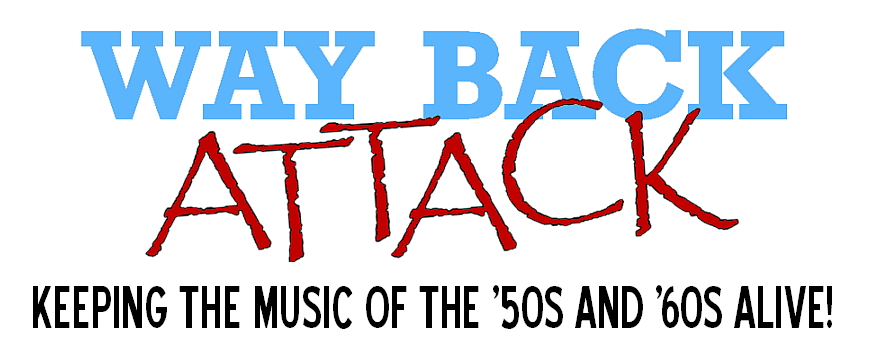JOE AND EDDIE
There's a Meetin' Here Tonite
Anyone who has ever heard Joe and Eddie on the radio is familiar with "There's a Meetin' Here Tonite," a lively adaptation of a popular spiritual from the early part of the 20th century and the only one of their recordings to receive notable airplay. Any attempt to categorize the southern-born, raised-in-Berkeley duo as a gospel act would be erroneous; singing the Lord's praises in church was a large part of their childhoods while the professional career found its origins in the popular folk music trend of the 1950s. As time went by, the duo incorporated other styles (blues, pop, calypso and jazz) and excelled at each.
Joe Gilbert was born in New Orleans in November 1940, one of his parents' eight children, and Eddie Brown began his life, also in a large family with six children, several months later in Norfolk, Virginia. Both families made their way to Berkeley, California in the coming years; Joe (a tenor) and Eddie (a baritone) began singing together in the choir at Calvary Presbyterian Church and at Willard Junior High School. They eventually became so close as to be like brothers, though some time passed before a professional alliance occurred to them. In 1956 while attending Berkeley High, each separately entered a school talent contest, but upon realizing they would be competing against each other, they entered as a duo and took first place.
In the fall of 1958, Joe began studies as a freshman at San Francisco City College. Eddie had a year remaining at Berkeley High School. They sang together in some local nightclubs and appeared on The Don Sherwood Show, a weekly TV series hosted by a popular local deejay, which led to auditions with Decca, RCA Victor and Capitol Records. They signed a one-year contract with the latter. "The Fox," an original folk-style composition by the duo, had been a favorite of clubgoers; the label released it as their first single in January 1959. The second release, "Green Grass," a fast-paced, escalating story about what grew around a 'hole in the ground' (a tree, nest, bird and flea), is a fun, humorous folk tune. The third and final Capitol single, "Remember Me," was also penned by the pair. The label was unable to get anything going within the one-year window and dropped the act.
They returned to San Francisco, enrolled at the University of Califonia in Berkeley and performed on campus at fraternity and sorority parties. One thing that set the duo apart from others was that they often sang a cappella, usually with little or no accompaniment; many early shows came off without any instrumental backing. Their unique harmony and alternating leads had become a trademark. Despite Capitol's inability to break Joe and Eddie nationally, their popularity was on the rise back in the Bay area through shows at the Purple Onion. Two weeks at the hungry i, San Francisco's most popular nightclub, became a successful trial run, leading to an additional eight weeks at the high-profile venue. In 1962, Gene Norman signed them to his GNP Crescendo label. Exciting Folk Duo: Joe & Eddie became their first album that summer.

They appeared in the MGM film Hootenanny Hoot, a summer 1963 theatrical release notable for its strong line-up including Johnny Cash, The Brothers Four, George Hamilton IV and country star Sheb Wooley. The duo performed "There's a Meetin' Here Tonite," which would soon be a hit in a number of radio markets (including top ten in Boston and Los Angeles, where the movie was filmed). Banjo-playing folkie Bob Gibson adapted the song from early spiritual sources, then Joe and Eddie made a few changes, applying their own kind of slang to some phrases and adding a part '...in the valley one day' where "Old Satan" doesn't get what he wants. And the line 'there is a meetin'' (or 'there's a meetin'') is repeated 42 times! The invitation was not subtle!
There were many more network TV appearances: J&E performed on The Danny Kaye Show, The Lively Ones, The Tonight Show, the Jackie Gleason Show, Hootenanny and Hullabaloo. All the hosts were enthusiastic about the talented young act. The second LP, There's a Meetin' Here Tonite, sold well and two more albums were issued in 1964: Coast to Coast (which also hit the charts) and Volume 4. Several more singles covering various genres appeared on GNP Crescendo, including Phil Ochs' "What's That I Hear (Freedom Calling)," a remake of Dimitri Tiomkin and Ned Washington's 1957 movie theme "Wild is the Wind," Huddie Ledbetter's "Goodnight Irene," the title track from the duo's fifth album Tear Down the Walls! and a pair of '65 recordings that leaned closer to rock: Jackie DeShannon's "Depend on Yourself" and Bob Dylan's "Walkin' Down the Line."
Eight albums appeared on GNP Crescendo between 1962 and '66; the title of the final one, The Magic of Their Singing, perfectly described the match made in a place far from the valley where they sang about meeting the most evil individual of them all. Then the unthinkable happened; while driving home from a show at the Cosmos Club in Seal Beach, Joe Gilbert's sports car overturned and crashed, taking his life at just 25 years of age. Suddenly a solo artist, Eddie Brown became more involved with behind-the-scenes work as a producer and arranger. Decades later Joe and Eddie, who were skilled at every style of music they attempted, are mainly remembered, due to their most famous recording, as a gospel duo.


